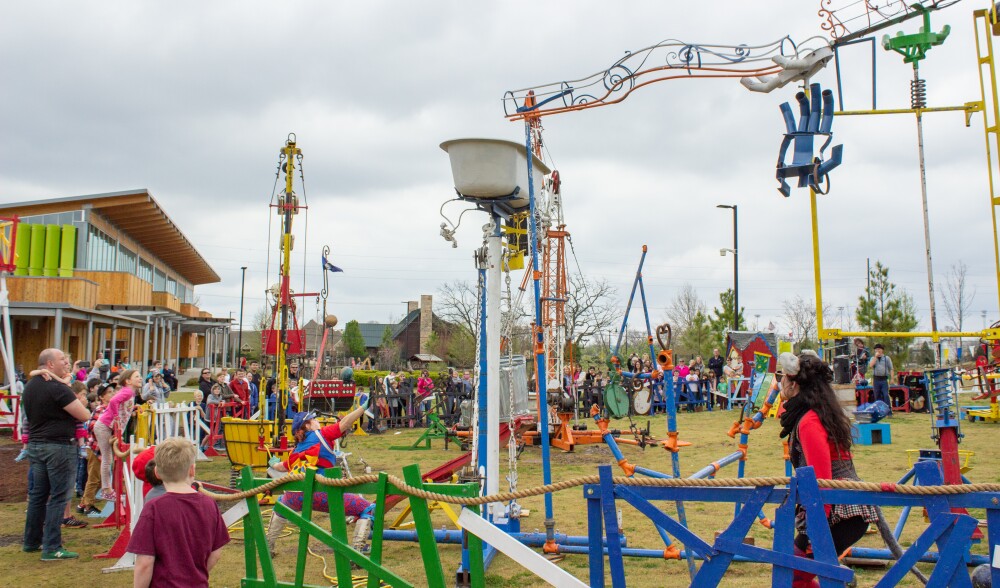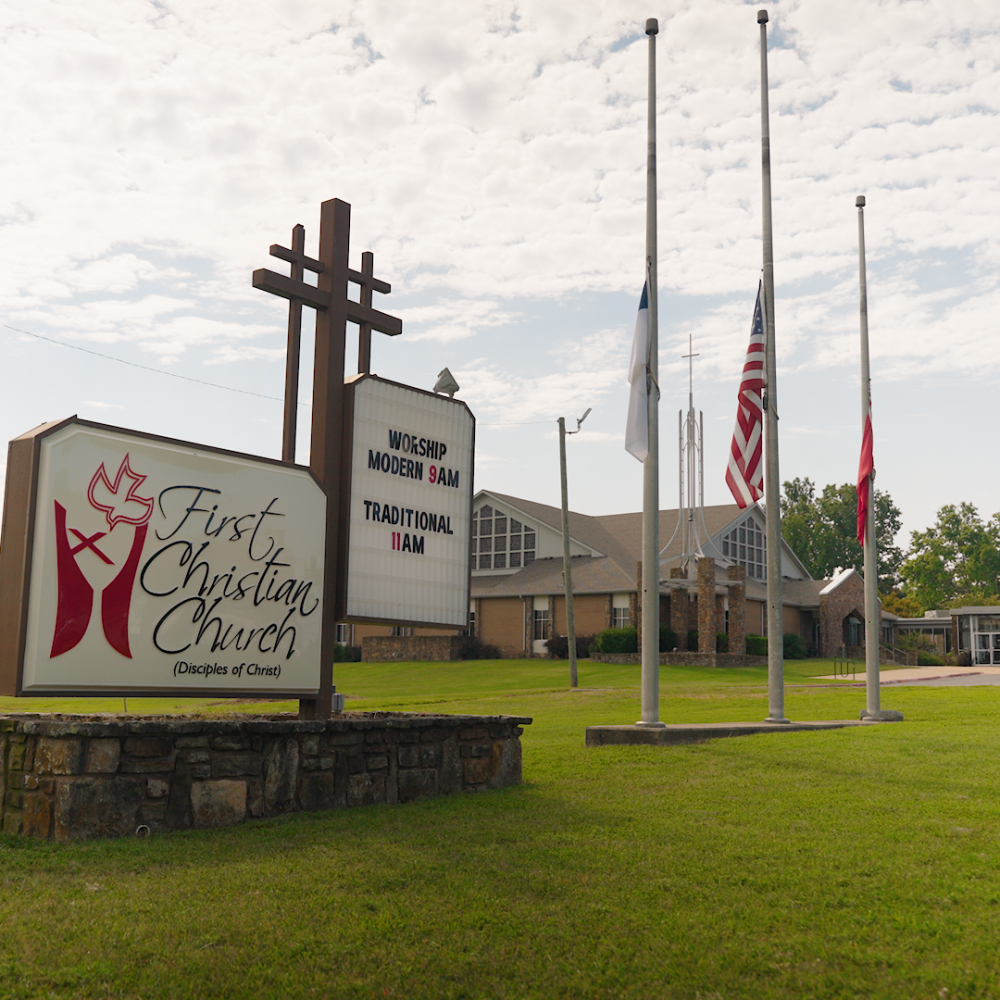In modern life, a “no assembly required” mentality can stifle creative instincts. But in Bentonville, Arkansas, the Scott Family Amazeum is seeking to refill the community’s well of inspiration.
“Some of the world’s great ideas were the result of someone tinkering in their garage,” explains Executive Director Sam Dean of the Maker Movement, which brings together artists, inventors and creators of all kinds to “learn through doing” in a social environment.
With its new Maker in Residence Program, the act of imagining, planning, building, failing, tweaking and ultimately creating something special is on full display at the museum and learning center--from a life-size mouse trap to tabletop mechanical “automata” sculptures.
As national and regional makers come to town to design, build and execute interactive community installations that intertwine art, science, technology and play, Sam explains why process may be just as important as product in fostering creativity.
Where did the concept for the Maker in Residence Program originate?
Sam: We wanted to invite creatives in for an exchange of ideas that leads to some kind of public expression at the museum or in other places. We were inspired by San Francisco’s Exploratorium, widely considered the finest science museum in the world. As a former staff member there, I watched firsthand the impact of its artists-in-residence programs and how they resonate over decades. By working with folks early in their career, we are helping local and national makers create a portfolio of experiences that results in lasting interactive art in the public domain.
How does the makers residency connect to the Amazeum’s focus on STEAM (STEM+Arts) learning?
Sam: Society has this weird tendency to silo the arts and sciences away from each other, when being creative wraps itself through all the scientific disciplines--Science, Technology, Engineering and Math. At the Amazeum, we’ve added art to this equation, which we believe can foster a more creative mindset.
Everyone from college admissions officers to employers is looking for people who are agile in their creative thought, with an ability to see the bigger picture and what's coming next. We've found that artists often have the best sensibility to focus on detail while keeping in mind what the bigger picture looks like.
Can you walk us through an example from your residency?
Sam: The creators of 'Life Size Mouse Trap’ invented something that's part installation, part performance and part dialogue. Mark Perez, his partner Rose Harden and their troupe have 17-18 interactive sculptures—what I like to call 50,000 pounds of awesome—culminating in a safe smashing down onto a car. Mark doesn’t just walk the audience through the mechanisms. He also takes them through his thought process and inspiration for such a large-scale project.
Is there a difference between how kids and grown-ups experience these projects?
Sam: That's one of the most powerful things about hosting the makers. Generations of families visit us, and it’s sparking conversations among these groups that might otherwise never happen. Second grade kids talk to their grandparents about the simple machines they are learning about in school—gears, pulleys, levers. Grandparents respond in turn about what they used to tinker with as a child—their first set of hand tools and some scrap wood found in a barn. These conversations within families build an understanding of science, tech and engineering that can be very deep and meaningful. That’s exactly what we want to see happen. We want to have people learn through play, learn collaboration and discuss unique concepts.
But 'tinkering' is about more than play, correct?
Sam: Some of the world's great ideas were the result of someone tinkering in their garage. I didn't grow up in a household where tools were important. But the first time I picked up a set of power tools, my life changed. Almost instantaneously I became a person capable of doing things. Confidence and self-efficacy are two of the most critical life skills, and through this program we get a chance to encourage this skill among educators, their students and their families.
At the Amazeum, we think the idea of creativity isn't in the final thing, but in the ideations, iterations and processes you go through to create it. That’s why the maker workshop is visible to the public. We are revealing the mechanisms behind the play.
Has the local community been responsive to this culture of making?
Sam: It was through the sheer will and efforts of the community that we are here in the first place, and we've seen an incredible response so far. Take Tinkerfest. It’s a statewide concept that we have taken and run with locally. Before the museum doors even opened, we wanted to celebrate local creativity, local makers and have an event where tinkerers of all skill levels could bring their families and have fun, say, taking apart a car piece by piece, just to see what was inside. Instantly, a principal threw up his hand and offered his middle school. About 2,500 people showed up that day for a museum that didn’t even exist yet.
Now you have maker programs not just for kids—but also teachers?
Sam: Our Maker Bootcamps have been popular with local teachers, training them to rethink what it means to teach through making. Making changes the mindset of how you approach teaching and learning. Instead of the teacher having every answer, it’s: ‘What can we learn together?’ If a teacher can learn to be as childlike in their own sense of wonder as the students, it helps those students understand the challenge and find solutions through trial and error. Frank Oppenheimer, founder of the Exploratorium, used to say that when a visitor sees an exhibit, you don’t want them to say, ‘boy, that is so clever.’ You want to inspire them into thinking, ‘what could I do myself?’





